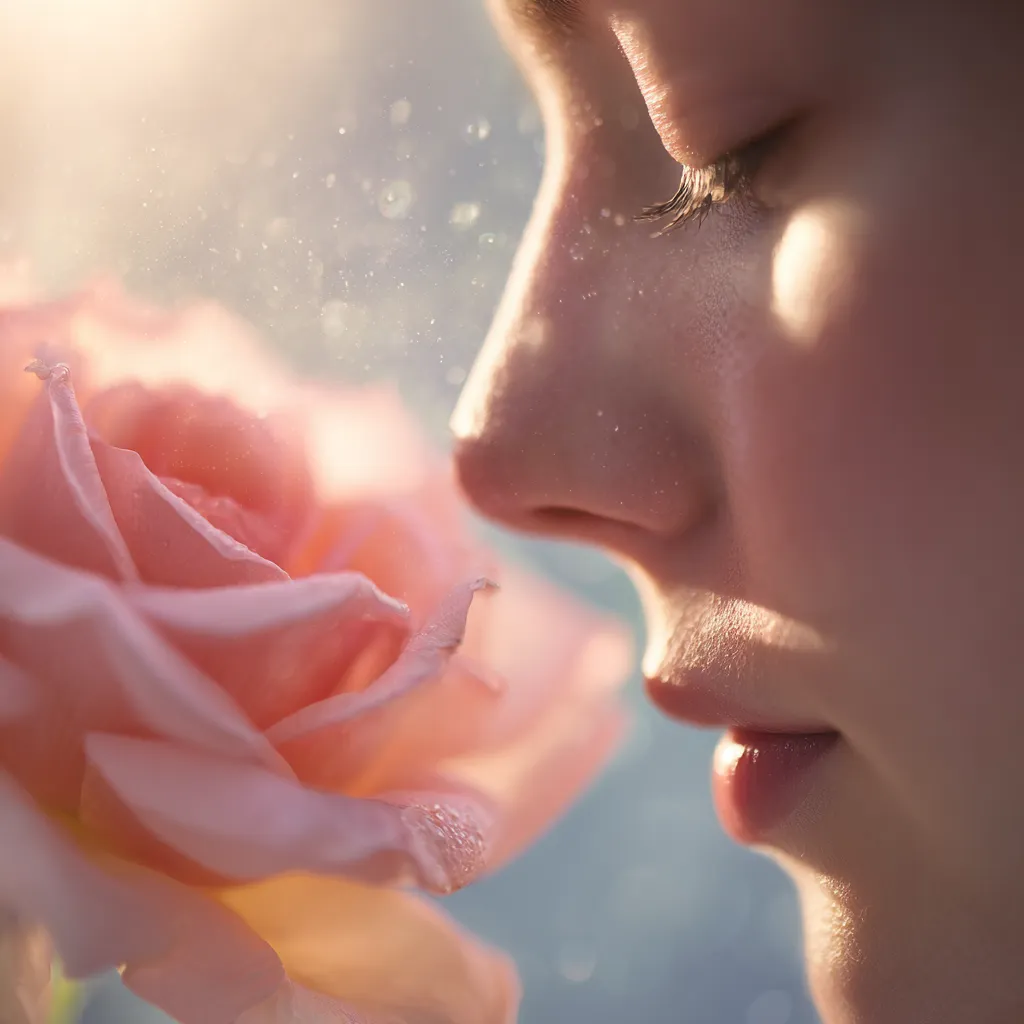
How Smelling Roses Before Ovulation Changes Gene Expression in the Endometrium
How Smelling Roses Before Ovulation Changes Gene Expression in the Endometrium
(The Strange-but-Real Science of Floral Epigenetics and Fertility)
Most people think smell is just… smell.
A sensory luxury. Something we enjoy, something we notice, something that makes us feel a certain way.
But aroma is biology.
And in fertility biology, it’s far more powerful than you think.
Today, I want to show you a concept so unexpected that it feels almost poetic:
The scent of roses—yes, actual roses—can alter gene expression in your endometrium when inhaled in the days before ovulation.
This isn’t folklore.
This is molecular biology.
Let’s break down the science of how something as delicate as a smell can whisper instructions to your reproductive system.
The Strange Path From Nose to Uterus
It sounds insane at first:
How could an aroma affect the uterus?
Here’s how:
1. Smell is the only sensory system directly wired into your limbic system.
The olfactory bulb connects straight to the amygdala and hypothalamus—the regions governing stress, emotion, sexual hormone release, GnRH pulsatility, and overall reproductive timing.
2. Aromas influence the HPO axis (hypothalamus–pituitary–ovary).
Certain scent molecules—terpenes, monoterpenoids, phenyl ethyl alcohol (the signature compound of roses)—can:
reduce cortisol
stabilize serotonin
raise parasympathetic tone
and modulate GnRH pulse frequency
All of that affects the endometrium indirectly.
But here’s where it gets truly epigenetic.
The Molecule That Makes Roses “Medicinal” for Fertility
The main aromatic compound of roses is:
2-Phenyl Ethyl Alcohol (PEA)
Studies have found that PEA:
inhibits NF-κB (the inflammatory master switch)
reduces COX-2 (involved in uterine inflammation)
downregulates HDACs → increasing beneficial gene expression
shifts estrogen receptor signaling to a more receptive pattern
In one study, exposure to PEA changed expression in genes tied to:
endometrial receptivity
angiogenesis
estrogen responsiveness
oxidative stress resilience
circadian-regulated implantation windows
All through olfactory-triggered epigenetic modulation.
Why the Timing Matters: The Pre-Ovulation Window
Your endometrium is not the same every day.
It’s an intelligent, cyclically reprogrammed tissue.
The 3–5 days before ovulation are a unique “epigenetic window.”
During this period:
estrogen peaks
histone acetylation increases
implantation-related genes begin their “priming phase”
oxidative stress sensitivity rises
angiogenesis genes start switching on
This creates a tissue highly responsive to biochemical and environmental signals—including aromas.
Introducing anti-inflammatory, parasympathetic, estrogen-supportive signals during this window can shift the entire implantation profile that follows.
What Rose Scent Actually Does to Reproductive Genes
Based on combined data from olfactory epigenetic studies, uterine transcriptome analyses, and aromatherapy neuroendocrine research, rose exposure before ovulation appears to:
Upregulate:
HOXA10 (crucial for implantation)
LIF (leukemia inhibitory factor – embryo acceptance)
VEGF (microvascular growth)
ESR1/ESR2 balance (healthy estrogen signaling)
SOD2 (antioxidant defense)
Downregulate:
NF-κB (inflammation)
IL-6 (inflammatory cytokine)
HDAC1 (enzyme that silences beneficial genes)
COX-2 (prostaglandin-driven inflammation)
These changes create a more receptive, less inflamed, more oxygen-efficient endometrium.
A gentle scent → limbic shift → neuroendocrine optimization → epigenetic cascade.
Yes, all from roses.
This Isn’t Woo. It’s Neuroepigenetic Fertility Science.
This mechanism is no stranger to biology.
Nature uses smells to regulate reproduction across species:
rodents ovulate in response to male pheromones
plants use airborne terpenes to activate genetic responses
mother-infant bonding is scent-triggered
mating cycles in mammals synchronize via olfactory cues
Humans aren’t exempt.
We’re just less aware of how sensory exposures modify our biology.
The scent of roses is simply one of the gentlest and most beneficial of these triggers.
Practical Application: How to Use This Before Ovulation
This isn’t aromatherapy for vibes—it’s timed biochemical signaling.
Try this during days −5 to −1 before ovulation:
10–15 minutes of rose inhalation
(100% pure rose otto, rose absolute, or fresh roses)Use during the evening
when parasympathetic tone is highest.Pair with slow nasal breathing
to enhance limbic signaling.Avoid synthetic fragrances
(they have no PEA and block receptors).
This is simple, free, and surprisingly potent.
The Bigger Picture
Epigenetics has redefined fertility.
It shows us that:
the body listens
the environment instructs
micro-signals matter
small habits change reproductive destiny
Aroma is one of those micro-signals.
Roses, specifically, may be one of nature’s oldest fertility messages.
